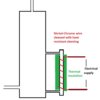Hello
Been given 12 of these for free. They are not particularly efficient as they are only 120w max and also dish out 90v which is not exactly user friendly.
Is it worth my buying a inverter to make use of these or is it a waste of money as I understand they are a bit poor as far as panels go anyway? (Thin film)
Or could I just dump the energy into a hot water cylinder/immersion?
Thanks
DM
Been given 12 of these for free. They are not particularly efficient as they are only 120w max and also dish out 90v which is not exactly user friendly.
Is it worth my buying a inverter to make use of these or is it a waste of money as I understand they are a bit poor as far as panels go anyway? (Thin film)
Or could I just dump the energy into a hot water cylinder/immersion?
Thanks
DM


